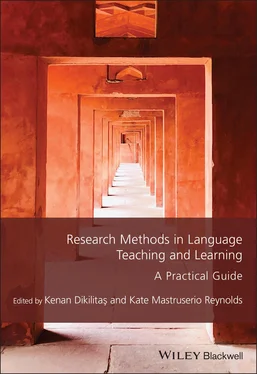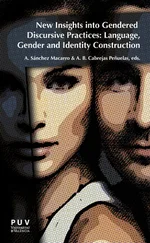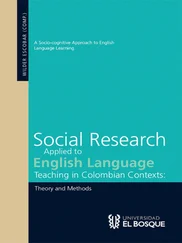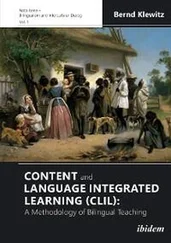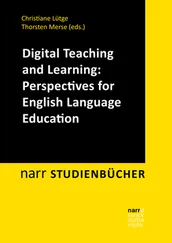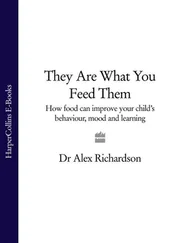Research Methods in Language Teaching and Learning
Здесь есть возможность читать онлайн «Research Methods in Language Teaching and Learning» — ознакомительный отрывок электронной книги совершенно бесплатно, а после прочтения отрывка купить полную версию. В некоторых случаях можно слушать аудио, скачать через торрент в формате fb2 и присутствует краткое содержание. Жанр: unrecognised, на английском языке. Описание произведения, (предисловие) а так же отзывы посетителей доступны на портале библиотеки ЛибКат.
- Название:Research Methods in Language Teaching and Learning
- Автор:
- Жанр:
- Год:неизвестен
- ISBN:нет данных
- Рейтинг книги:5 / 5. Голосов: 1
-
Избранное:Добавить в избранное
- Отзывы:
-
Ваша оценка:
- 100
- 1
- 2
- 3
- 4
- 5
Research Methods in Language Teaching and Learning: краткое содержание, описание и аннотация
Предлагаем к чтению аннотацию, описание, краткое содержание или предисловие (зависит от того, что написал сам автор книги «Research Methods in Language Teaching and Learning»). Если вы не нашли необходимую информацию о книге — напишите в комментариях, мы постараемся отыскать её.
Research Methods in Language Teaching and Learning
Research Methods in Language Teaching and Learning
Research Methods in Language Teaching and Learning — читать онлайн ознакомительный отрывок
Ниже представлен текст книги, разбитый по страницам. Система сохранения места последней прочитанной страницы, позволяет с удобством читать онлайн бесплатно книгу «Research Methods in Language Teaching and Learning», без необходимости каждый раз заново искать на чём Вы остановились. Поставьте закладку, и сможете в любой момент перейти на страницу, на которой закончили чтение.
Интервал:
Закладка:
I am unsure whether, prior to 2003, I had read much qualitative case study research related to language teacher development. However, by November that year, Borg’s (2001) grammar teacher cognition case studies were clearly having an impact on my thinking, since, in Progress Report 5, I was speculating on the prior development and self-efficacy beliefs of two of Borg’s cases, therefore engaging in “naturalistic generalization” (Lincoln & Guba, 1985) prompted by the “thick description” (Geertz, 1973) in Borg’s writing.
Subsequently, while I reviewed the literature, my appreciation grew of the need for qualitative case study research into teachers’ self-efficacy (TSE) beliefs that is “teachers’ beliefs in their capabilities of supporting learning in various task- and context-specific cognitive, metacognitive, affective and social ways” (Wyatt, 2008, p. 5). My understanding of TSE beliefs had been shaped by my reading of Bandura’s (1986) theory and by my earlier experiences of researching language learners’ self-efficacy beliefs (Wyatt, 2000). However, on fully engaging with the TSE beliefs literature in 2004, I found much confusion. Though based on “a simple idea with significant implications” (Tschannen-Moran & Woolfolk Hoy, 2001, p. 783), numerous studies appeared to be conceptually problematic, with the construct frequently misunderstood and misapplied, as had already been recognized (Henson, 2002; Wheatley, 2002), and has been discussed more fully since (Klassen et al., 2011; Wheatley, 2005; Wyatt, 2014). Klassen et al. (2011, p. 37) complain, for example, of definitional entropy, whereby “carefully defined psychological constructs lose precision over time”; besides sharing this concern, I was troubled by the very global (i.e., insufficiently task-specific) way in which TSE beliefs were generally assessed in many quantitative studies, and by erroneous assumptions that TSE beliefs were relatively inflexible and therefore not open to change (Wyatt, 2008, 2014).
Qualitative case studies researching TSE beliefs were clearly in short supply. Only 2 of the 218 studies published between 1998 and 2009 that were reviewed by Klassen et al. (2011) were in this category, this despite various researchers (e.g., Labone, 2004; Tschannen-Moran et al., 1998; Wheatley, 2005) explicitly calling for the use of interpretive qualitative case study research methodology to develop in-depth understandings.
Given the scarcity of qualitative case studies of TSE beliefs, and the benefits I had derived from reading Borg’s (2001) grammar teacher cognition cases, I read the two qualitative TSE beliefs case studies I had identified with interest. Indeed, in my literature review (Wyatt, 2008), I then presented vignettes extracted from both Milner and Woolfolk Hoy (2003) and Mulholland and Wallace (2001) to demonstrate, in a field dominated by quantitative research methodology, the potential for learning about TSE beliefs from qualitative case study research.
Strengths of one of these cases (Milner & Woolfolk Hoy, 2003) includes its use of “triangulation” (Stake, 1995), with several forms of this drawn upon. Evident was: “data source triangulation,” which involves considering the consistency of the phenomenon observed over time; “methodological triangulation,” where different methods are combined; and “member checks,” whereby data are discussed with research participants. However, a weakness of the study was that “theory triangulation,” whereby alternative theoretical explanations are considered, seemed absent; this appeared problematic since the construct of self-efficacy beliefs was unfortunately misconstrued in this study (in terms of “lofty goals,” rather than specific tasks).
I also detected flaws in Mulholland and Wallace’s (2001) account of a beginning teacher’s struggle to use group work in a “hands-on” way in elementary science lessons in Australia. Concentrating on exploring the teacher’s development through “a psychological lens” (Tschannen-Moran et al., 1998, p. 203) in a way consistent with TSE beliefs theory (Bandura, 1986), the researchers nevertheless did so somewhat narrowly; I felt that analytical perspectives from the fields of teacher cognition and teacher education were lacking. Wheatley (2005, p. 760) argues for “a merging of fields” in research into TSE beliefs, drawing together expertise from different specialist areas. Reading Mulholland and Wallace’s (2001) story, I found myself wondering about the role of practical knowledge in the teacher’s development; how had this grown in relation to her developing TSE beliefs? I was also curious about the role of mentoring that encouraged deep reflection, and indeed about the role of reflection itself, a term which appeared only early in the article. Space was doubtless limited in Mulholland and Wallace’s (2001) conclusions and implications section, but I felt that a more holistic interpretation of the complexities of the multiple realities under investigation, which can be one of the strengths of case study (Stake, 1995), would have been welcome.
Research Framework
Research Questions
By the time I presented my thesis (Wyatt, 2008), my case study of five teachers posed the following overall research questions:
1 What changes do teachers report in their TSE beliefs?
2 To what extent do changes in their TSE beliefs reflect changes in their practical knowledge?
3 Which aspects of the BA TESOL program may have influenced changes in their practical knowledge and TSE beliefs, and how?
I now explain how I came to settle on five teachers.
Gaining Ethical Approval and Sampling
After gaining permission to use an informed consent form, guaranteeing confidentiality, anonymity, and the right to withdraw at any time, I asked for volunteers in September 2003; 16 teachers responded positively. While none withdrew, I reduced the number I was focusing on to 12 then 10 then 6 throughout 2004 (and then to 5 in 2006 during the writing-up stage), but without signaling this process to the research participants, to avoid the risk of hurting feelings and/or reducing learning opportunities, given that I realized participating may have brought some benefits through the more extended interaction it afforded.
When making decisions about sampling, Stake (1995, p. 4) argues that “the first criterion should be to maximize what we can learn.” Indeed, I quickly realized in my research that participating teachers who were relaxed and engaged throughout, had interesting and revealing stories to tell, listened carefully, and were able to expand fluently in clear voices (easily picked up by the tape recorder) made very good interviewees. These were reasons to retain them. In contrast, a teacher who appeared to be suffering from mild interview fatigue was quickly dropped.
I also employed “purposive” and “theoretical” sampling (Silverman, 2010). Of these, “purposive sampling” requires us to “think critically about the parameters of the population we are studying and choose our sample cases carefully on this basis” (Silverman, 2010, p. 141). Through considering factors such as gender, school type (first or second cycle, single sex or mixed, following the new or old curriculum at a time of curriculum renewal) and location (town, rural or mountain village), I could focus on achieving some balance and variety (Stake, 1995).
“Theoretical” sampling, sampling on the basis of hypotheses (Silverman, 2010), was also crucial. One of my hypotheses was that growth in practical knowledge and TSE beliefs would be more evident in dimensions of the teachers’ work they cared about most, where they were focused on self-directed goals (Henson, 2001). Just over halfway through their three-year course, the teachers were asked to articulate goals explicitly when choosing research topics for their dissertations. As I had started with a wide focus (Nisbet & Watt, 1984) in the first research interviews, these topics were well represented in the data. For example, one teacher identified his main research interests in September 2004 as: motivation, group work, adapting materials, and assessment (in no particular order). In the previous year, I had elicited data from him relating to three of these topics, and his choice of dissertation then combined two. It seemed ecologically valid (Cohen et al., 2011) to align my focus with his, to concentrate on themes he was most interested in exploring for himself.
Читать дальшеИнтервал:
Закладка:
Похожие книги на «Research Methods in Language Teaching and Learning»
Представляем Вашему вниманию похожие книги на «Research Methods in Language Teaching and Learning» списком для выбора. Мы отобрали схожую по названию и смыслу литературу в надежде предоставить читателям больше вариантов отыскать новые, интересные, ещё непрочитанные произведения.
Обсуждение, отзывы о книге «Research Methods in Language Teaching and Learning» и просто собственные мнения читателей. Оставьте ваши комментарии, напишите, что Вы думаете о произведении, его смысле или главных героях. Укажите что конкретно понравилось, а что нет, и почему Вы так считаете.
